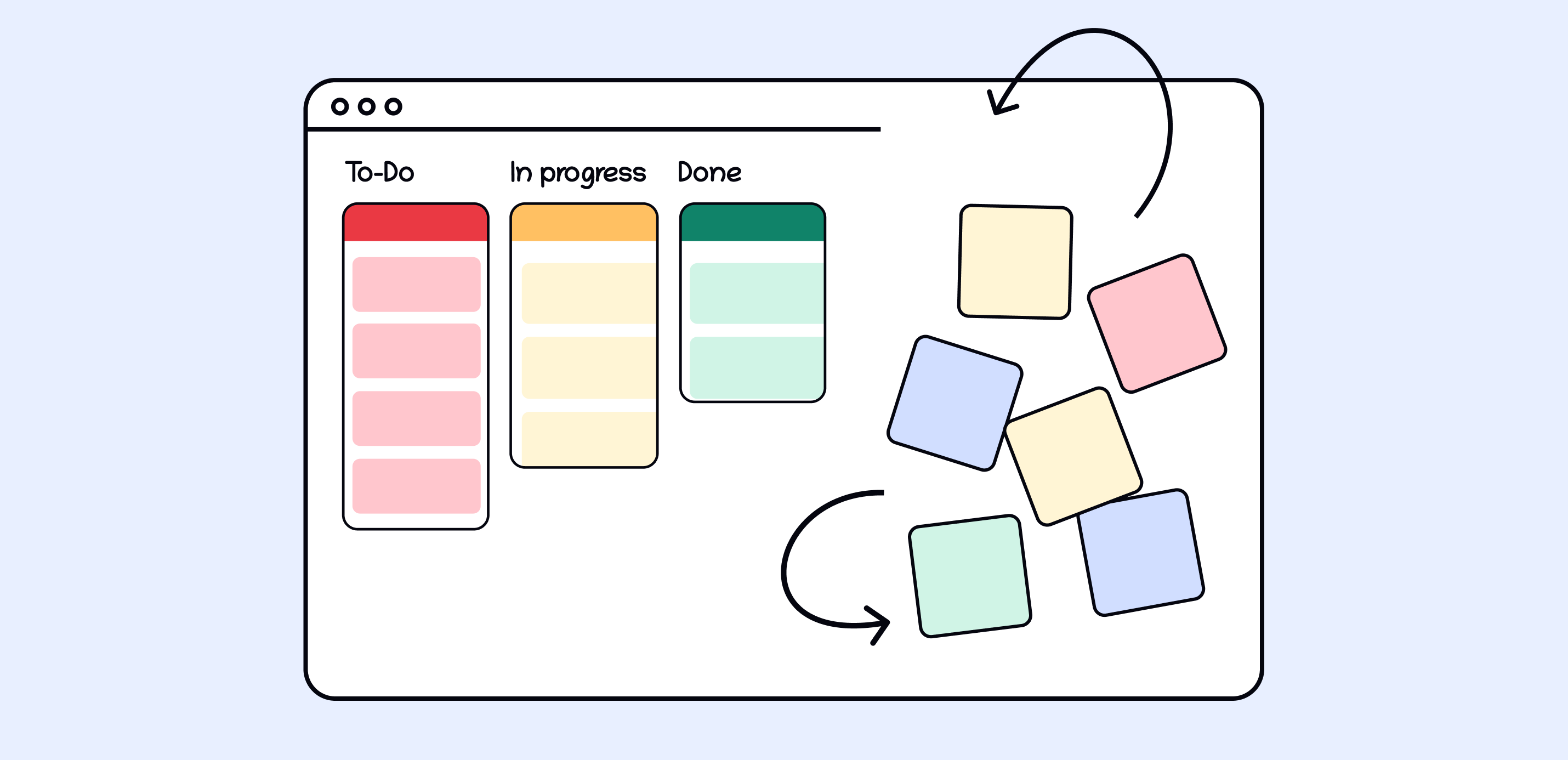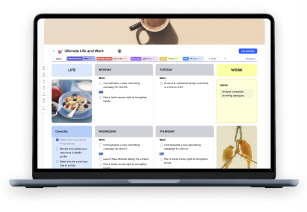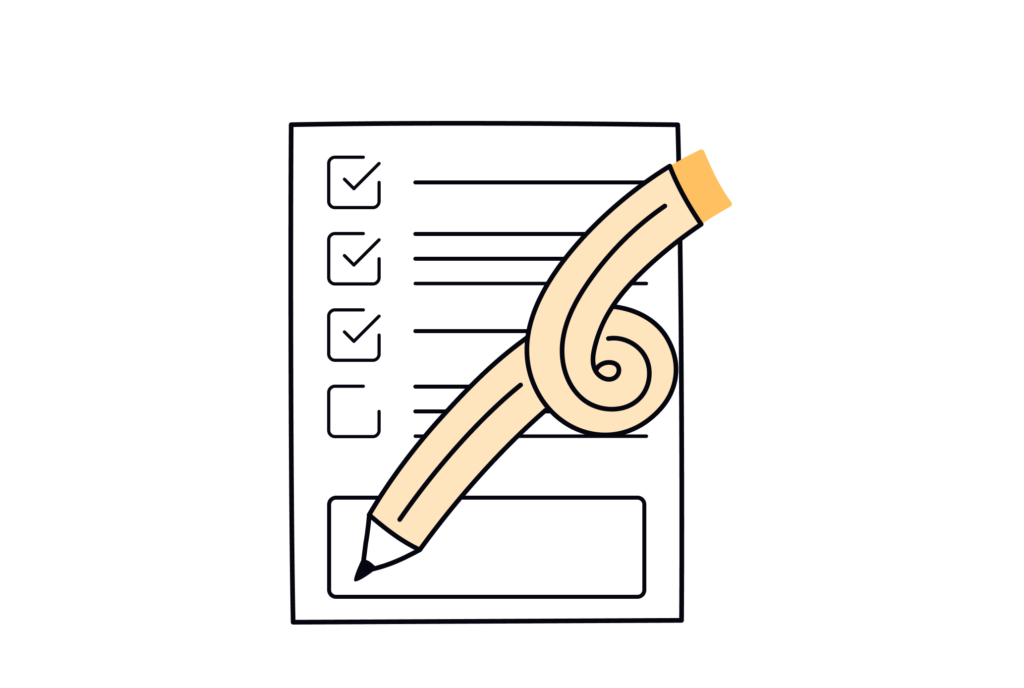Agile approaches, which prioritize flexibility, teamwork, and active delivery, have introduced a whole new way of thinking, developing, and releasing software products. The most influential agile development frameworks are Scrum and Kanban, each with its own principles, practices, and benefits.
Understanding what stands between Kanban and Scrum becomes a core thing when a team is in pursuit of an Agile approach that should keep pace with the goals and dynamics of the team’s complex projects, complex tasks, and organizational culture. Understanding the main tenets that make up each “agile,” a team gets to make an informed decision on the one they should subscribe to.
This article compares these two and looks at a comprehensive comparison of Kanban and Scrum histories, key elements, and the advantages that the two frameworks offer to help you choose which one will bring maximum benefit to your team.
We willy try to unpack the strengths of each framework appropriately toward the project type and potential hybrid approach. The main goal is to provide you with information that would allow you, whether you’re a project manager, business owner, or a team member, to decide the best agile framework between Kanban and Scrum in your specific needs, hence successfully running your project management process.
What is Kanban?
Kanban is an agile methodology that delivers its highest results in the continuity of the system. The workflow system under Kanban is very flexible and adaptive, contrary to Scrum.
Base principles include the flow of work visualization, work-in-progress limits, control and management of the flow, explicate policies that ensure proper conduction of work by the organization, and having feedback loops.
The framework uses a Kanban board to represent the different stages that will describe the development of a project, helping teams watch the flow of tasks and identify possible bottlenecks.
One of the key advantages of Kanban is its focus on improvement. It lets a team see the inefficiencies of their entire work process and remove them through work-in-progress limits and flowing tasks to improve efficiency. This can potentially lead to reduced lead times, improved cycle times, and more responsive software development.
This really makes the Kanban method distinguishable as a way of managing workflow and task flow, most popular with complex project teams and those supporting existing software systems.
Best cases for Kanban utilization
Such an approach would, in fact, be appropriate in software development projects, where a continuous workflow structure would allow the team’s pace and reaction to change more effectively. For this reason, the flexible approach Kanban offers would be useful.
While Scrum has prescribed roles such as the Scrum Master and Product Owner, Kanban teams are pretty much self-organizing, in which members of different teams organize themselves from end to end through collaboration systems that span the entire production process.
Roles and accountabilities in Kanban
The critical roles within a Kanban system belong to the Product Owner/Manager, who sets the product vision and the roadmap, and who works with the team to make sure they stick to the plan. Kanban Team refers to the cross-functional group that has the mandate to pull work items from the Backlog, according to capacity and Work-in-Progress (WIP) limits, and continually improve the Kanban process.
The Kanban Board Facilitator will manage workflow through the Kanban Board, including facilitating Kanban meetings and ensuring the team keeps with Kanban principles and practices. Others include stakeholders whose role is to provide feedback on features of the product, give input on priorities, and attend Kanban review meetings.
In a nutshell, the prime responsibilities in a Kanban system include: visualization of workflow; limiting work-in-progress; managing the flux of work; driving continuous improvement; and with that, ensuring transparency, along with very importantly, collaboration among the team members and stakeholders.
Such roles and accountabilities should be well defined in the organization so that these people can follow through on the effective implementation of their Agile Kanban processes and for continuous improvement.
Core key performance indicators in Kanban
Key Kanban KPIs include: Cycle Time showing the time taken to deliver a unit of value by the team; Throughput, indicating the overall delivery capacity of the team; Work in Progress (WIP) that tracks whether there is adherence to WIP limits and signals problems; Lead Time, showing the time taken to deliver a unit of value by the whole process; Defect Rate, aiding in quality management; Cumulative Flow Diagram, showing the workflow and where the queues might form; and On-Time Delivery, showing process reliability as one of the measures under the Kanban process.
In that regard, these KPIs help Kanban teams and organizations trace performance, point out areas for improvement, and ensure effective value delivery to customers.
What is Scrum?
Another well-adopted agile framework, Scrum, was founded in the 1990s and recognized with a plan-driven approach to software development. Though similar to the smooth workflow of Kanban, Scrum is linear and follows an iteration model. It divides work into time-fixed “Scrum sprints” of fixed length, which usually range from 1 to 4 weeks.
The Scrum Processes Flow can be initiated from Backlog Grooming and Prioritization, where the Product Owner works together with the whole team in the definition and refining of product requirements. The second step involves Sprint Planning, where the team plans work for the coming Sprint. This means that the team is working to deliver the planned functionality in the Sprint, with meetings in Daily Scrum to remove any impediments for alignment.
The team shows the work done at the end of the Sprint to the stakeholders and receives feedback. During the Sprint Review, there is a discussion on what went well, the problems encountered, and how they would get better going forward.
Best cases for Scrum utilization
On the other hand, Structured Scrum, with its clear roles, events, and artifacts, allows greater visibility into the way the project is progressing. This could further enhance collaboration and team working with reduced time-to-market through iterative and incremental delivery of working software.
The best fit in such a situation would be Scrum, best suited to new product development in which the requirements and scope can be less defined, marked by a need for a high degree of feedback and adaptation. Further, Kanban practices have been adapted to fit along with the Scrum framework practices to make hybrid approaches, such as Scrumban, which may bring out benefits from both frameworks.
Roles and accountabilities in Scrum
Core to the Scrum principles are: scrum teams roles, events of scrum, and artifacts of scrum. Further, Scrum team roles involve a Product Owner (defines the product vision and roadmap, manages the product backlog, and collaborates with the Scrum Team to ensure the right work is being done), a Scrum Master (facilitates Scrum events and processes, coaches the team on Scrum practices and principles, and removes impediments), and the Scrum Team (cross-functional group responsible for delivering the product increment, collaborating to plan, execute, and improve the work, and self-organizing to accomplish the Sprint goal).
Such events in Scrum are: Sprint Planning, Daily Sccom, Sprint Review, and Sprint Retrospective. When combined with the Product Backlog, Sprint Backlog, and Increments, on the other hand, these are referred to as Scrum artifacts and evidence of transparency in how the entire project is going.
The two main responsibilities in Scrum are managing the ordered list of work items called the Product Backlog and making sure that the list is visible, transparent, and obvious to the concerned people. Similarly, the team has accountabilities in Sprint Planning, where the team jointly selects the Sprint goal and work to be accomplished by the team. This would, therefore, mean that the team at any one time is, therefore, responsible for committing to the work they believe can be delivered.
The Daily Scrum, Sprint Review, and Sprint Retrospective are another set of important tasks that ensure the team checked the progress and gathered feedback in its process, toward its continuous improvement both in the Scrum process and in effectiveness.
This can be ensured by clear definition of roles and responsibilities of the employees in regard to the effective Agile Scrum process implementation and its continuous improvement.
Core key performance indicators in Scrum
The core KPIs in Scrum methodology include Team Velocity, measuring the team’s ability to deliver; Cycle Time, showing how quickly value is being delivered to the customer; Defect Rate, ensuring the team works on quality matters; Sprint Burndown, showing the progress tracking potential problems; Cumulative Flow Diagram, tracking the identified bottlenecks down; Sprint Goal Attainment, tracking down the planning and execution efficacy; and Customer Satisfaction, tracked against the team’s capacity to deliver against the set promises.
This helps the Scrum team and the whole organization to be performance-focused, know where to improve, and ensure that effective value is delivered for the customers.
Comparing Kanban and Scrum
Differences in flow and cadence
Though Kanban shares the bedrock principles of agile software development – collaborative, iterative delivery, and continuous improvement – with Scrum, the underlying approaches supporting those principles have very little similarity.
Flow and rhythm are among the basic differences between Kanban and Scrum. While Kanban focuses on smooth, continuous flow, Scrum is built more around a sprinting model. Fixed-length iterations are organized by process work items spanning one to four weeks.
Differences in roles and responsibilities
It is argued that such a difference in approach influences the roles and responsibilities of the teams. Scrum defines roles with specific responsibilities: the Product Owner, the Scrum Master, and the Development Team. Kanban is used in current situations, in self-organized teams, and in roles that may change.
Suitability for different project types
The other critical parameter would relate to the suitability of the two methodologies regarding the type of project. In other cases, Kanban is more relevant, like in the case of a maintenance or support-oriented assignment where, most probably, in this kind of scenario, workflow likely remains more continuous, requirements are also likely stable, and chances of having better-scoped, relatively constant flow of requirements are better.
Choosing the right approach
When comparing Kanban with Scrum, the team must consider many factors to weigh the impacts of Kanban. These include the laid project goals, team size, and team nature. This enables careful consideration of all these factors, allowing team members to know which Agile approach or a mix will be the right one for them to use on their work initiatives.
Which project management framework is most suitable for a particular environment? Answer to which one should be chosen – either Kanban or Scrum. Clearly understand the strengths and weaknesses of every framework and be flexible in adopting the chosen ways over time, pointing towards changes with project or team needs.
Choosing the right framework: Kanban VS Scrum
Choose accurately which agile framework: Kanban or Scrum. In short, this decision should be critically made. In fact, choosing the wrong framework may become another one of the most critical decisions, which may substantially influence your project’s success. This article puts forth a few key considerations to weigh when thinking about which framework might be the best fit for a team or organization.
Factors to consider
One of the primary factors to consider is the project’s goals and objectives. In terms of support and maintenance-oriented works, Kanban’s continuous workflow and the strong emphasis it places on managing the flow of work might be a more suitable match.
Scrum provides a more structured and aligned process through its sprint-based approach, which means it better fits the type of scenarios whereby new product development occurs and requirements are quite unsure.
Another factor to consider is the number of members in the team. The Scrum, with its well-defined roles like product owner and Scrum master, may work better with a larger cross-functional team. On the other hand, the traditionally characteristic self-organized structure of Kanban, in fact, may work best for a small, rather agile team.
Organizational culture and maturity are also critical. Scrum’s more formal, process-driven approach is likely more appropriate for organizations having strong cultures in project management, while the flexibility of Kanban, along with its approach to making improvements, might be best aligned to suit organizational values of adaptability and autonomy.
It also takes into account the complexity and uncertainty of the product or project. The iterative and incremental delivery model of Scrum is probably more effective for the problems of rapidly changing, complex requirements, while the model of continuous workflow applied by Kanban is best used in problems whose nature is more predictable and oriented towards maintenance.
Evaluating the chosen framework
When comparing Kanban vs. Scrum, the working team ought to look very carefully at the potential threats and associated risks of the framework they are working under and, on the other hand, opportunities for improvement. These can include piloting the developed framework, comprehensive training, and closely monitoring the team’s progress to make sure the agile implementation is initiated as per the project’s requirements.
Ultimately, it is through this understanding of requirements and open-mindedness to further adapt and evolve that the approach – one of the best chosen, whether it be Kanban, Scrum, or a hybrid of both – evolves in time.
By matching the chosen methodology to the project’s goals, team dynamics, and organizational culture, Agile teams will be better poised to maximize the benefits of agile in the running of successful software development initiatives.
Conclusion: Which framework will be the best for my team?
We discussed some of the core principles, practices, and benefits of every framework to enlighten and empower teams to make informed choices that best fit the needs of their projects, organizational culture, and team dynamics.
Kanban focuses on the visualized process of continuous workflow and self-organized teams, it brings flexibility and adaptability to practices found useful for maintenance and support-oriented tasks. In contrast, Scrum practices with their fixed sprint-based approach and clear roles would be more effective for new product development where requirements and feedback need to be provided on a very frequent basis.
Be that as it may, between Kanban and Scrum, the lines are hardly concrete. On the contrary, hybrid method, which pick the best out of both frameworks, emerge. This gives an understanding of the subtleties of these agile methodologies and allows the team to fit their implementation in the most appropriate manner for their specific project management needs, team structure, and organizational culture.
The application choice is always regarding the project’s goals team aspects, and with the complexity and uncertainty of the product in mind, either Kanban, Scrum, or a combination of both.
Considering these parameters carefully and leveraging the right agile approach will help unlock the development initiative’s full potential to drive towards continuous improvement, higher efficiency, and successful outcomes of the project.
Emergent need for agile methodologies has put the ability to surf through the Kanban vs. Scrum debate and decide on the more befitting framework right up there with those invaluable skills, not just for project managers and business teams but also for agile practitioners.
Adopting the principles and practices of agility can help you guide your team effectively in the ever-changing landscape of software development and deliver great results with confidence.
FAQ
1. What is Kanban?
Kanban is an agile methodology that emphasizes continuous improvement and flow of work. It uses a Kanban board to visualize the different stages of development, helping teams identify and address bottlenecks in the process.
2. What is Scrum?
Scrum is an agile framework that organizes work into fixed-length iterations called sprints. It has defined roles, such as the Product Owner, Scrum Master, and Development Team, with specific responsibilities to guide the delivery of incremental value.
3. What is the difference between Kanban and Scrum?
The primary difference is in their approach to workflow. Kanban focuses on continuous flow, while Scrum is based on a sprint model with fixed iterations. Kanban also tends to have self-organized teams, whereas Scrum has more clearly defined roles and responsibilities.









